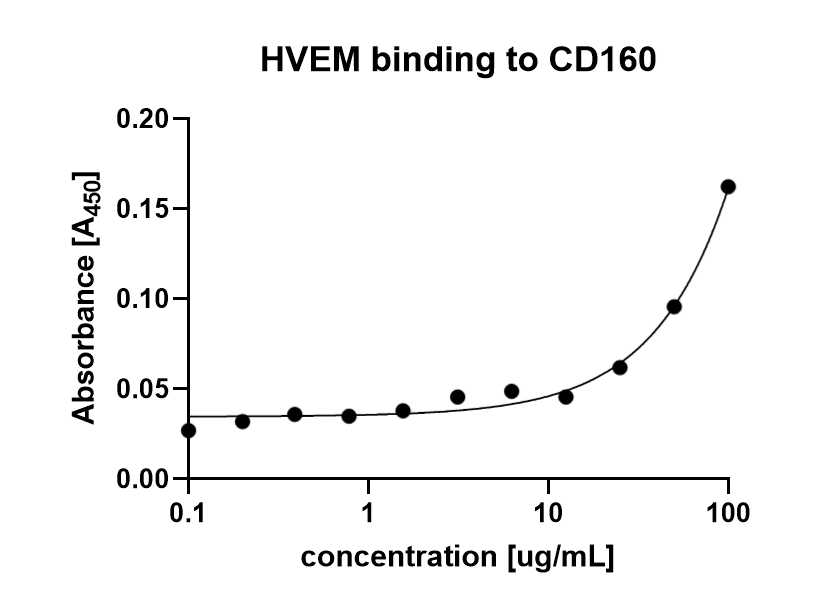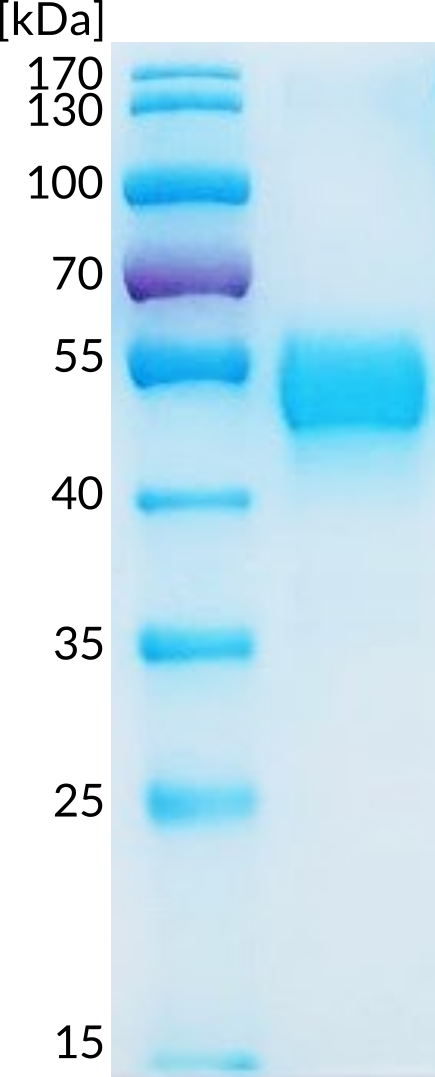| Alternative names | BY55 |
| Known ligands | HVEM |
| Origin | Homo sapiens |
| Accession number | O95971 |




CD160 antigen also known as natural killer cell receptor BY55, exists as: a glycosylphosphatidylinositol (GPI)-anchored cell surface molecule with a single immunoglobulin (Ig)-like domain (1) and transmembrane form (2), each likely initiating distinct signaling pathways via phosphoinositol 3-kinase in activated NK cells and in activated T cells (9). This Ig-like domain contains six cysteine residues allowing the formation of multimers tightly linked by disulphide bonds (1, 5). CD160 is highly expressed on human CD56dim CD16+ NK cells, NKT cells, γδ T cells, and CD8+ T cells and on all intestinal intraepithelial T lymphocytes but not on B or myeloid cells (4). CD160 binds broadly but weakly to MHC class I molecules and strongly to the regulatory molecule herpes virus entry mediator (HVEM) (3). CD160 is one of four (BTLA, CD160, LIGHT, and LTα) ligands of HVEM (6). Depend on form of CD160 and cells of immunology system, CD160 can be co-inhibitor or co-stimulator. CD160-GPI was reported as co-stimulator on CD8 T-cell activation upon binding to MHC-I ligands and as co-inhibitor on CD4 T-cell activation upon binding to HVEM (8).
- Le Bouteiller P. et al. CD160: A unique activating NK cell receptor. Immunology Letters. 2011 Aug 30, 138(2): 93-96
- Giustiniani J., Marie-Cardine A. Bensussan A. A Soluble Form of the MHC Class I-Specific CD160 Receptor Is Released from Human Activated NK Lymphocytes and Inhibits Cell-Mediated Cytotoxicity. The Journal of Immunology. 2007 Feb 1, 178(3): 1293-1300.
- Liu S., Zhang W., Liu K., Wang Y. CD160 expression on CD8+ t cells is associated with active effector responses but limited activation potential in pancreatic cancer. Cancer Immunology, Immunotherapy. 2020 Feb 13.
- Murphy TL., Murphy KM. Slow Down and Survive: Enigmatic Immunoregulation by BTLA and HVEM. Annual review of immunology. 2010, 28: 389-411.
- Ortonne N et al. Human and Mouse Mast Cells Express and Secrete the GPI-Anchored Isoform of CD160. Journal of Investigative Dermatology. 2011 Apr 131(4): 916-924
- Muscate F. et al. HVEM and CD160: Regulators of Immunopathology During Malaria Blood-Stage. Frontiers in immunology. 2018 Nov 13;9: 2611.
- McGrath MM., Najafian N. The Role of Coinhibitory Signaling Pathways in Transplantation and Tolerance. Frontiers in immunology. 2012 Mar 19;3: 47
- Cai G., Freeman GJ. The CD160, BTLA, LIGHT⁄HVEM pathway: a bidirectional switch regulating T-cell activation. Immunological reviews. 2009 May 229(1): 244-58
- Giustiniani J., Bensussan A., Marie-Cardine A. Identification and characterization of a transmembrane isoform of CD160 (CD160-TM), a unique activating receptor selectively expressed upon human NK cell activation. The Journal of Immunology. 2009 Jan 1;182(1):63-71.
